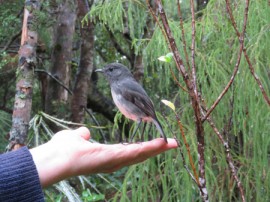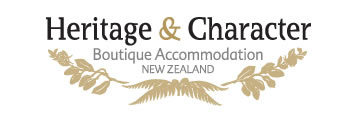
Sails Ashore – Stewart Island
At Sails Ashore, we package a Guided Ulva Island Tour. So our guests get to experience one of the jewels of Natural New Zealand. Ulva was the second Island in New Zealand to be completely cleared of introduced animals, and so is as close to pristine as any place we are able to visit. I arrived on Stewart Island in 1969, as Forest Ranger, and started the work removing deer. And although I have done many things since then, am privileged to have watched the Islands transformation from a significantly degraded ecosystem to what we enjoy now.
.
.
A Kiwi Couple
Yesterday I took a New Zealand couple over to Ulva for the morning. A somewhat dull day that in the afternoon turned to light, and then steady rain. But we got home still dry, and as usual Ulva charmed my guests (and me).
I always enjoy showing New Zealanders what is almost certainly a corner of New Zealand that is as close as it gets to how this country looked before people arrived here centuries ago.
Nesting
The birds were a little slow initially, but eventually we did get to enjoy a good number of species, although our most common… Brown Creepers … were like naughty children, “heard but not seen”.
And being spring it was obvious that many species were busy either with, or preparing for families. We were delighted to see several Yellow Heads and especially one male busy nest building, while his mate issued orders very vocally from several branches away.
Yellowhead nest building. He took that feather in and out the hole several times before being satisfied, leaving it there and flying off to briefly perch with his mate, and then away for more material.
Spring Nectar
And of course with lots of spring blossom tuis and bellbirds were busy harvesting the nectar
Dracophyllum longifolium (Inaka) blossom is an important source of spring nectar, and astonished my guests with the strong honey scent they give off
Tuis in particular are avid feeders on Inaka blossom, and it’s really noticeable when there is lots of blossom producing, as the honey dew tends then to be ignored. Conversely when we have a cold spell the tress stop producing nectar, or at least slow down and the honey dew is then targeted.
Robins out in Force
A dutiful male robin busy gathering food for his family
It’s an unusual day when we don’t see lots of robins, and yesterday was no exception. Not so many females… all on nests ?? but lots of males either busy food gathering or singing their territorial songs.
Tui busy harvesting Inaka nectar
Orchids
I freely admit I’m fascinated by our native orchids, although I hasten to say I’m far from an expert… I leave that to folk far more au fait than me. But I do enjoy their presence in our forest and on our road verges. It’s a bit early for our roadside orchids, although yesterday on a road tour I was able to show my guests what the flowerless plants look like. But on Ulva they were fascinated by the dancing spider orchids and little spider orchids in amongst the moss and tiny ferns alongside the track.
For many of my New Zealand guests orchids are those big flamboyant blooms they see in florists and on birthdays and anniversaries. So when they discover that New Zealand does infact have a strong orchid community it opens up a whole new world of things to look for.
Nematoceras acuminatum (Dancing Spider Orchid alongside the track
Singularybas oblongus (spider orchids) alongside the track
